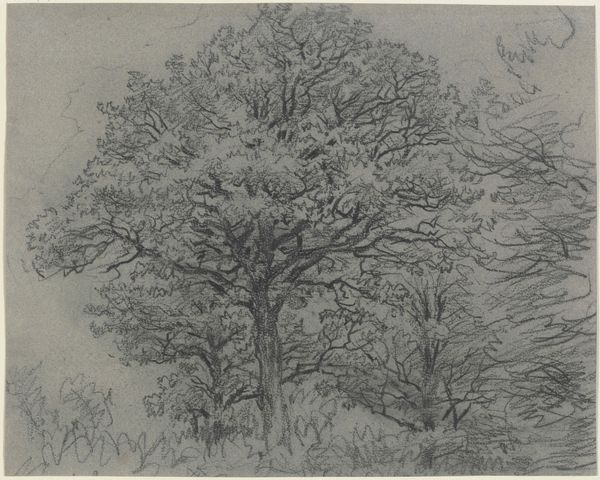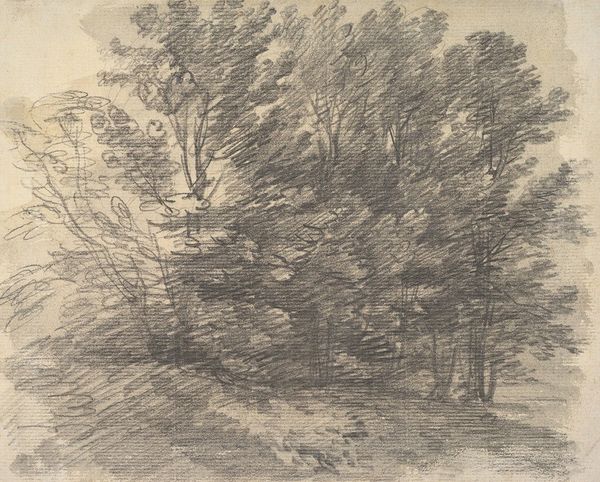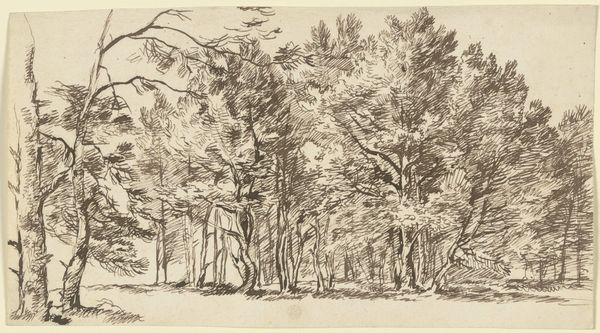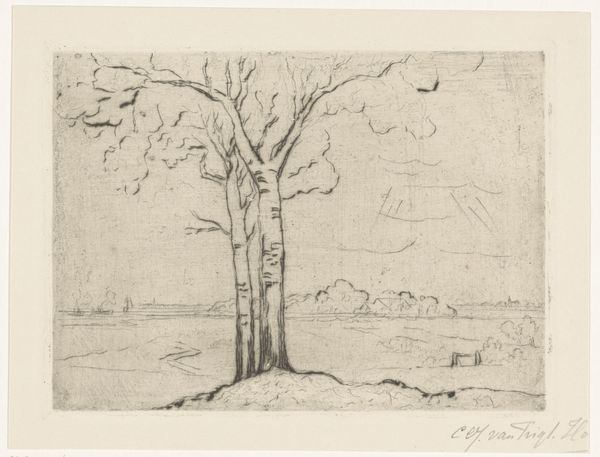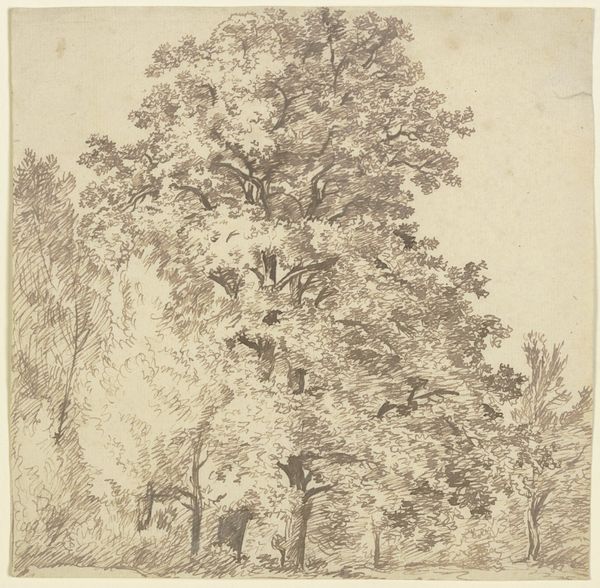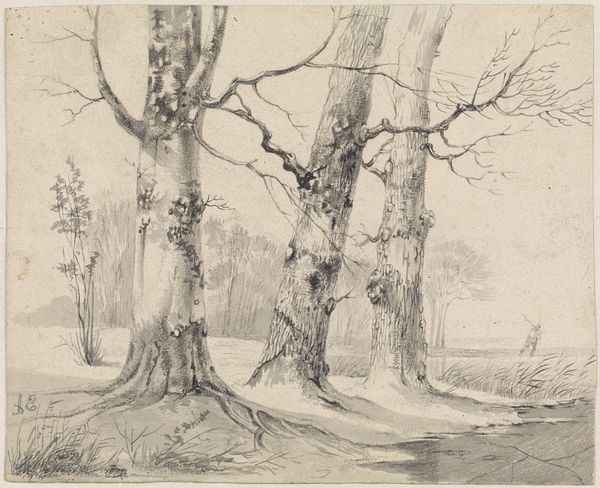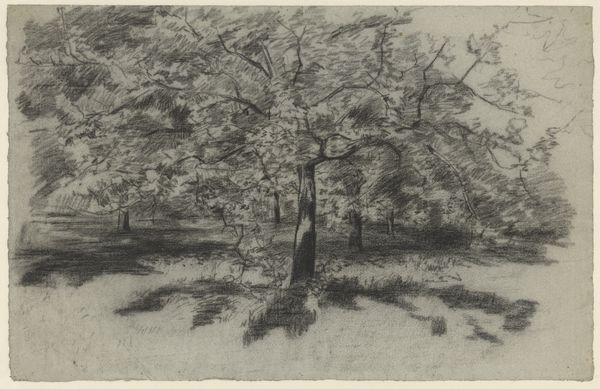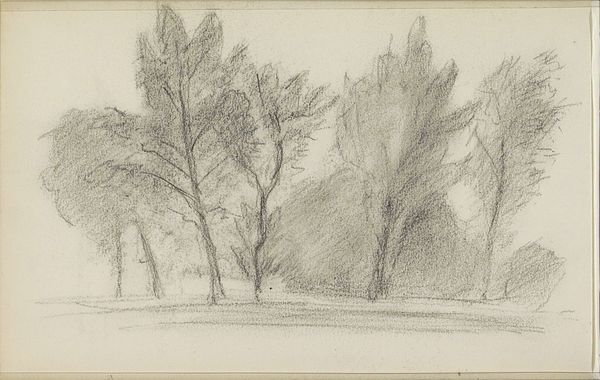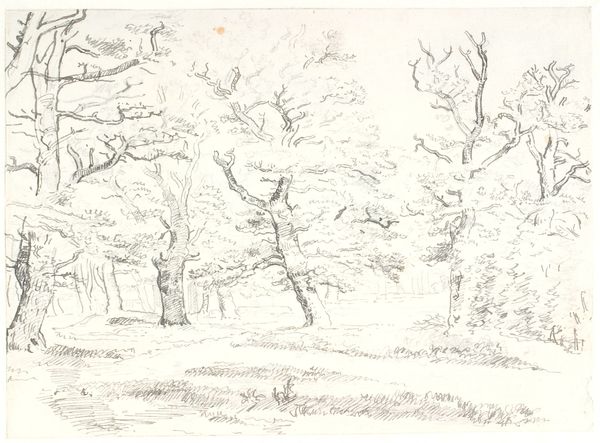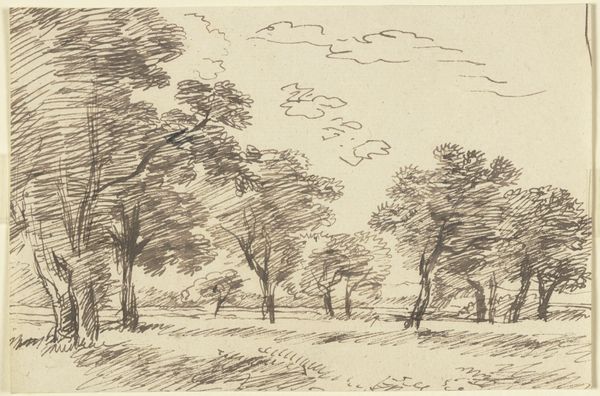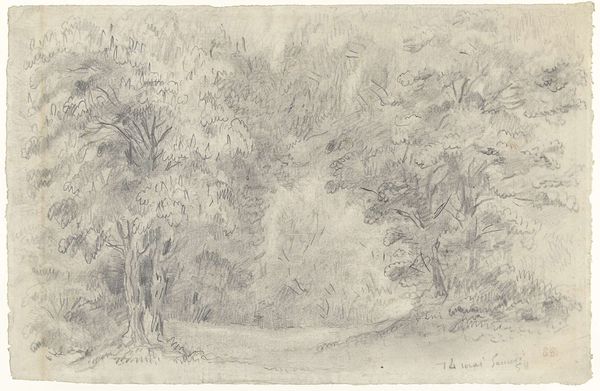
Dimensions: height 560 mm, width 750 mm
Copyright: Rijks Museum: Open Domain
Curator: What strikes me immediately is the delicate interplay of light and shadow. There’s a stark, almost austere quality to it despite being a landscape. Editor: Indeed. Here we have "High Trees in a Flat Landscape", a graphite and pencil drawing by Willem Bastiaan Tholen, sometime between 1870 and 1931. It's currently held here at the Rijksmuseum. Curator: The density of the graphite is masterfully controlled. Look at how Tholen builds up the textures of the leaves and the rough bark. He captures a real sense of mass using just a few tonal variations. The impression created by these trees standing out is great. Editor: Landscape art in the Netherlands carried a significant weight of national identity. During this period, artists were often compelled to capture the quintessential Dutch landscape: flat, open, and dominated by the sky, to reflect their national consciousness. Tholen certainly contributes to that tradition. Curator: Absolutely. And there’s a clear structural clarity here, in terms of pictorial organization. The verticality of the trees bisects the horizontal plane, creating a harmonious balance. The composition suggests a study in form rather than an exercise in romantic sentimentality. Editor: It makes me consider the burgeoning conservationist movement at the time. The very act of portraying these towering trees might signify a growing appreciation—or perhaps a looming concern—for nature’s preservation in the face of urbanization. Curator: Interesting perspective. I see also the application of realism. The pencil-and-graphite strokes work in harmony. But this could be due to a number of different environmental and personal situations experienced by the artist during this period. It has to be considered in understanding and experiencing his work. Editor: Thank you. Thinking about Tholen’s era gives this work added depth. Now, every stroke feels imbued with purpose beyond mere representation. Curator: Agreed. Seeing the image through a social-historical lens truly opens up richer interpretation.
Comments
No comments
Be the first to comment and join the conversation on the ultimate creative platform.
